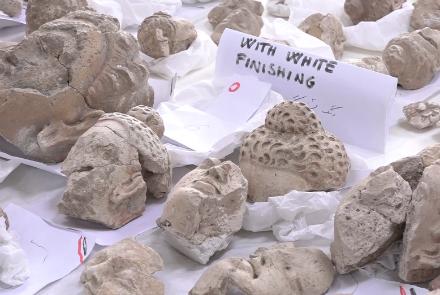Archeologists at the National Museum of Afghanistan are restoring more than 250 artifacts and other historical relics that were badly damaged in 2001 during the Taliban regime.
According to Abdul Baseer Kamjo, the National Museum’s head of Kushan-era relics, the Taliban was responsible for the damage.
“The Taliban destroyed these works--saying they are against statues or artifacts--but they didn’t consider that these artifacts remind us of Afghanistan’s past history and culture before the emergence of Islam,” said Kamjo.
Archeologists completing the restoration work said that the sculptures were recovered from the Huda area of Jalalabad city in eastern Afghanistan.
“The first step is to identify that all the pieces are similar--that might belong to the same figure--then we put them together. The repairing process is the second step,” said Karimullah Aryan, a restorer.
Kamjo said that the destruction of artifacts and other historical relics was done for the same reason that the Buddha statues in Bamiyan were destroyed, referring to the 2001 dictate of then-Taliban leader Mullah Mohammad Omar to blow up ancient Buddha statues—each over 100 feet tall--carved into the side of a mountain in the central highlands of Afghanistan.
“These artifacts were no longer worshiped after the emergence of Islam, but they are a part of history. But the Taliban had their own extremist ideas and views and destroyed all these artifacts that were in the Ministry of Information and Culture, and in Bamiyan,” said Kamjo.


